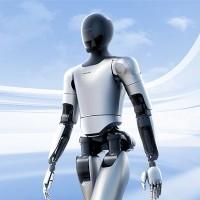Deep Robotics represents the innovative of combining robotics with advanced artificial intelligence (AI) and deep learning technologies. By integrating these sophisticated AI algorithms, Deep Robotics systems can handle performing complex tasks that were once thought impossible for machines. Unlike traditional robots, which follow pre-programmed instructions, deep robotics systems can learn from their environment, adapt to changing conditions, and enhance their performance over time. This advancement opens up new possibilities across industries, from manufacturing and healthcare to logistics and research, fundamentally transforming how humans communicate with machines.
One of the most significant advantages of Deep Robotics is its power to analyze and process massive amounts of data in real time By leveraging deep learning algorithms, robots can interpret visual, auditory, and sensor data to produce informed decisions autonomously. Like, in industrial settings, deep robotics systems can detect defects in products, optimize assembly lines, and predict equipment failures before they occur. This amount of intelligence not only increases operational efficiency but also minimizes errors and reduces production costs, making deep robotics a game-changer for businesses seeking to maintain competitive advantages.
Along with industrial applications, Deep Robotics is revolutionizing healthcare AI-powered robotic systems can assist surgeons in performing precise and minimally invasive procedures, monitor patients'vital signs, and even provide companionship and support in eldercare settings. These robots use deep understanding how to adapt to patients'unique needs, recognize patterns, and respond intelligently, enhancing both safety and care quality. Furthermore, the integration of deep robotics with telemedicine allows medical professionals to extend their reach, delivering expert care remotely while maintaining high levels of accuracy and responsiveness.
Another key facet of Deep Robotics is its role in autonomous systems and exploration Robots equipped with deep learning capabilities are increasingly found in autonomous vehicles, drones, and underwater exploration devices. These systems can navigate complex environments, make split-second decisions, and adapt to unpredictable circumstances without human intervention DEEPRobotics. From self-driving cars to robotic research assistants in hazardous environments, deep robotics is enabling safer, more efficient, and more capable autonomous operations, paving the way in which for the next where intelligent machines work seamlessly alongside humans.
Finally, the growth of Deep Robotics highlights the significance of ethical considerations and responsible innovation As robots are more intelligent and autonomous, ensuring why these systems are safe, transparent, and aligned with human values is critical. Researchers and developers are concentrating on building deep robotics systems which are not only technically advanced but in addition socially responsible, capable of supporting human workers, enhancing productivity, and improving quality of life. With ongoing advancements, Deep Robotics is placed to redefine technology, industry, and society, offering unprecedented opportunities for innovation and progress.
One of the most significant advantages of Deep Robotics is its power to analyze and process massive amounts of data in real time By leveraging deep learning algorithms, robots can interpret visual, auditory, and sensor data to produce informed decisions autonomously. Like, in industrial settings, deep robotics systems can detect defects in products, optimize assembly lines, and predict equipment failures before they occur. This amount of intelligence not only increases operational efficiency but also minimizes errors and reduces production costs, making deep robotics a game-changer for businesses seeking to maintain competitive advantages.
Along with industrial applications, Deep Robotics is revolutionizing healthcare AI-powered robotic systems can assist surgeons in performing precise and minimally invasive procedures, monitor patients'vital signs, and even provide companionship and support in eldercare settings. These robots use deep understanding how to adapt to patients'unique needs, recognize patterns, and respond intelligently, enhancing both safety and care quality. Furthermore, the integration of deep robotics with telemedicine allows medical professionals to extend their reach, delivering expert care remotely while maintaining high levels of accuracy and responsiveness.
Another key facet of Deep Robotics is its role in autonomous systems and exploration Robots equipped with deep learning capabilities are increasingly found in autonomous vehicles, drones, and underwater exploration devices. These systems can navigate complex environments, make split-second decisions, and adapt to unpredictable circumstances without human intervention DEEPRobotics. From self-driving cars to robotic research assistants in hazardous environments, deep robotics is enabling safer, more efficient, and more capable autonomous operations, paving the way in which for the next where intelligent machines work seamlessly alongside humans.
Finally, the growth of Deep Robotics highlights the significance of ethical considerations and responsible innovation As robots are more intelligent and autonomous, ensuring why these systems are safe, transparent, and aligned with human values is critical. Researchers and developers are concentrating on building deep robotics systems which are not only technically advanced but in addition socially responsible, capable of supporting human workers, enhancing productivity, and improving quality of life. With ongoing advancements, Deep Robotics is placed to redefine technology, industry, and society, offering unprecedented opportunities for innovation and progress.
